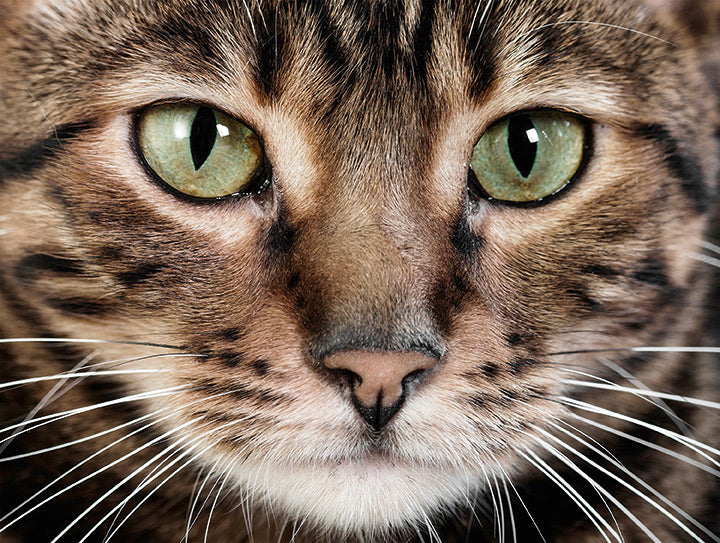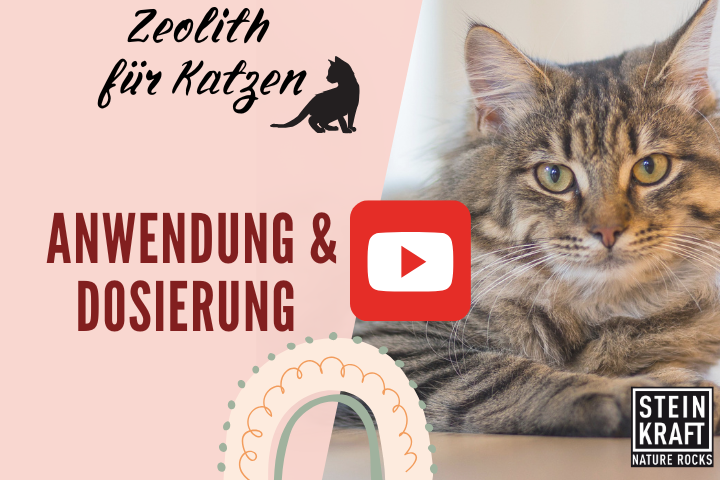Secrets about cats - What you may not know about cats:
Cats are fascinating and often mysterious creatures, and there are many interesting facts about them that may surprise even experienced cat owners. Here are five such lesser-known facts:
-
Cats have a "third eyelid": In addition to their upper and lower eyelids, cats have a third eyelid called the nictitating membrane. This thin eyelid is usually not visible, but it can sometimes be seen in tired or sick cats. It helps protect the eye and keep it clean.

-
Cats sweat through their paws: While humans sweat primarily through their skin, cats regulate their body temperature primarily through sweating on their paws. They have only a few sweat glands, which are located on their paws.
-
Cat purring can have healing properties: Cat purrs occur at a frequency that has been proven to have healing properties, both for the cat itself and for humans. This frequency can aid bone and muscle healing and is also associated with a calming effect on humans.

-
Cats have a "vocal mimicry" ability: Some cats can learn to imitate the sounds of other animals or even human vocalizations. This behavior is sometimes used to attract attention or to indicate certain needs.
-
Cats can't taste sweetness: Cats are one of the few animal species that lack sweetness receptors. This is due to their evolution as carnivores, relying primarily on meat as a food source and therefore not having developed a need to perceive sweet tastes.
These rare and fascinating aspects help us better understand and appreciate these complex and wonderful creatures, treat them properly, and better interpret their body language.

The psychology of cats
Cat psychology is a fascinating and complex subject. Although often perceived as independent and secretive, cats actually have rich emotional lives and exhibit many behaviors that provide insight into their psychological states. Here are some key elements of cat psychology:
-
Independence and territorial behavior: Cats are naturally territorial animals and value their independence. They mark their territory by scratching, rubbing, and sometimes urinating to signal their presence to other cats.
-
Bonding with humans: Despite their independent nature, cats can form strong bonds with their humans. Their ways of showing affection can be subtle—such as purring, nudging, or simply being close.

-
Communication: Cats communicate through a variety of sounds, body language, and touch. Meowing, for example, is one way cats communicate specifically with humans, while they more often use body language and smell among themselves.
-
Play behavior: Play is not only a form of entertainment for cats, but also an important component of their mental and physical health. It helps them practice hunting skills, reduce stress, and stay physically fit.
-
Stress and anxiety: Cats can be sensitive to changes in their environment or routine. Signs of stress or anxiety can include behavioral changes such as excessive grooming, aggression, or withdrawal.

-
Cognitive Behavior: Cats demonstrate a certain degree of problem-solving skills and can understand simple cause-and-effect relationships. They are also capable of remembering important locations, such as where their food is kept.
- Social Interaction: Although cats are often portrayed as solitary animals, they can be social animals, especially if they are accustomed to living with humans or other animals from an early age.
Cat behavior can vary greatly depending on their personality, their background, and how they were raised. Understanding cat psychology helps build a stronger and more fulfilling relationship with these fascinating animals. It also helps you look beyond certain behaviors and interpret them correctly.

Why do cats meow? Understand your cat's meow
Cats are incredibly communicative animals, even though we often think of them as silent and secretive observers. In fact, cats meow for many reasons, and the behavior can vary from cat to cat. But don't worry, with a little attention and understanding, you can figure out what your cat is really trying to tell you!
-
Cats meow for attention: Many cats meow when they want attention. This can mean they want to be petted or simply want companionship. A gentle meow is often a "Hello, I'm here, and I would appreciate your attention."
-
Meowing as a request for food: If your cat meows near its food bowl or walks toward the kitchen door, it often means it's hungry. Cats quickly learn that a meow near the food means quick service.
-
Cats meow to comment on their surroundings: Sometimes cats meow simply for fun or to observe the world around them. A short meow when looking out the window or at a new toy is a way of sharing their discoveries with you.

-
Changes in living environment: If your cat suddenly meows more than usual, it could be due to a change in their environment or routine. Perhaps there's a new pet in the house or a change in their daily routine that they find stressful. Cats are sensitive to change and often try to alert us to their worries.
-
Anxiety or discomfort: If the meow suddenly becomes loud, continuous, and plaintive, it could be a sign of stress or a health condition. Pay attention to whether the meowing occurs more frequently in certain situations and whether your cat is displaying other symptoms. In such cases, a visit to the vet should be considered.
-
Meowing as affectionate communication: Sometimes cats meow simply out of affection. A soft, rapid meow can be a sign of love and attachment—especially when accompanied by a head nod or a light purr. It's their way of contacting you and seeking closeness.

Every cat has its own "meow language," and as a cat lover, you'll quickly learn which type of meow corresponds to which situation. It's worth listening carefully and paying attention to their body language, because cats are masters at showing us what they need—it's just a matter of whether we listen to them!
So your cat's meow isn't just a sound—it's a loving dialogue between you and your furry friend. And who knows, maybe your cat is just discovering how much fun it is to wrap you around their finger with a charming "meow"!

Conclusion:
Understanding cat psychology is key to building a close and harmonious relationship with our furry friends. Their independence, coupled with their ability to form strong bonds, makes them fascinating and complex creatures. By better understanding their behavior, body language, and needs, we can offer them a fulfilling and stress-free life. Whether through play, communication, or proper care, every cat is unique, and the love and attention we give them will be reciprocated with affection and trust.


































